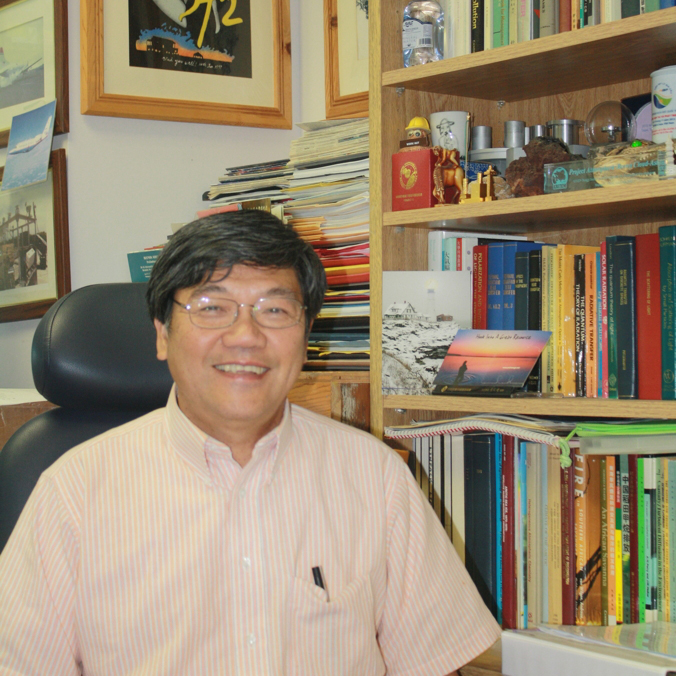
Deputy Terra Project Scientist
Mail Code 613
NASA/Goddard Space Flight Center
Greenbelt, MD 20771
USA
Phone: (301) 614-6188
Email: si-chee.tsay-1@nasa.gov
B.S. in Atmospheric Sciences from the National Taiwan University (Taipei, Taiwan) in 1977, and M.S. and Ph.D. in Atmospheric Sciences from the University of Alaska in 1982 and 1986, respectively. Joined Goddard Space Flight Center as a Physical Scientist in the Laboratory for Atmospheres since 1994. Visiting Scientist in the Universities Space Research Association, Goddard Space Flight Center, between 1990 and 1994, and Research Scientist in the Department of Atmospheric Science, Colorado State University (Fort Collins, Colorado) from 1986 to 1990. Appointed Adjunct Associate Professor at the Geophysical Institute, University of Alaska, 1992-1998, and Adjunct Professor at the Earth Systems Science Interdisciplinary Center, University of Maryland, 2002-2012. Awarded NASA Exceptional Scientific Achievement Medal in 2002 and NASA Outstanding Leadership Medal in 2008, among numerous achievement awards. Served as member of the FIRE/CRYSTAL-FACE, EOS/MODIS/CERES/NPP, DOE/ARM Science Teams, NASA/ESTO Spectrometry Data Compressing Team, EPA, ONR & NASA Aerosol Science Teams, and EOS/Terra deputy project scientist since 2000.
Authored over 27 papers published in refereed scientific journals, in addition to many scientific/technical reports and book chapters. One paper has received frequent citations since its publication in 1990 for the review of absorption of solar radiation by clouds. Another paper/code, the 1988 “theoretical radiative transfer algorithm in multiple scattering and emitting layered media”, was featured as the most cited article (1,444 as of 6 January 2012) in the 50th anniversary celebration of Applied Optics. It was also selected in the SPIE Milestone Series on “Scattering in the Atmosphere.” This radiative transfer code, DisORT, is freely distributed through NASA and widely used by the scientific communities.
Besides theoretical developments in radiative transfer (1-D and 2-D), research experience includes science planning and operating remote-sensing sensors and in-situ probes from suborbital and ground-based platforms in field experiments to study aerosol, cloud and surface properties, and to aid in the development of atmospheric and land remote sensing and retrieval algorithms under NASA’s Earth System Science projects. Developed jointly the Leonardo concept and airborne simulator: a fleet of microsat clusters, each equipped with a compact, low-power, low-cost, Earth-viewing spectrometer, for formation flight in space. Building and deploying a suite of surface remote-sensing and in-situ instrumentation (SMART, COMMIT, and ACHIEVE mobile laboratories, cf. http://smartlabs.gsfc.nasa.gov/) to compare and validate satellite measurements. Actively participated in many national and international field experiments (listed from 2000 onwards): PRIDE (Puerto RIco Dust Experiment), Puerto Rico, June-July 2000; SAFARI (Southern Africa Fire-Atmosphere Research Initiative), southern Africa, Aug-Sep 2000; ACE-Asia (Aerosol Characterization Experiment –Asia), eastern Asia, March-May 2001; CRYSTAL-FACE (Cirrus Regional Study of Tropical Anvils and Cirrus Layers – Florida Area Cirrus Experiment), Florida, July 2002; UAE2(United Arab Emirates United Aerosol Experiment), Arabian Gulf, Aug-Sep 2004; EAST-AIRE (East Asian Study of Tropospheric Aerosols: an International Regional Experiment), China, Feb-July 2005; BASE-ASIA (Biomass-burning Aerosols in South East-Asia: Smoke Impact Assessment), Thailand, Feb-May 2006; NAMMA (NASA African Monsoon Multidisciplinary Activities), Cape Verde, Aug-Sep 2006; CHINA2-AMY08 (Cloud, Humidity Interacting Natural/Anthropogenic Aerosols in Asian Monsoon Year-2008), China, April-Oct 2008; DISCOVER-AQ (Deriving Information on Surface conditions from COlumn and VERtically resolved observations relevant to Air Quality), Greater Washington-Baltimore area, July 2011; a series of 7-SEAS (7-South East Asian Studies) deployments over northern Southeast Asia, such as at Dongsha Island, Taiwan, March-June 2010; at Son La, Vietnam, March-April 2012; and the BASELInE (Biomass-burning Aerosols & Stratocumulus Environment: Lifecycles & Interactions Experiment), northern Southeast Asia, March-April 2013-2015 & 2019-2020; and RAJO-MEGHA (Radiation, Aerosol Joint Observations – Modeling Exploration over Glaciers in Himalayan Asia, Sanskrit for Dust-Cloud), Nepal, October 2017-June 2020.

